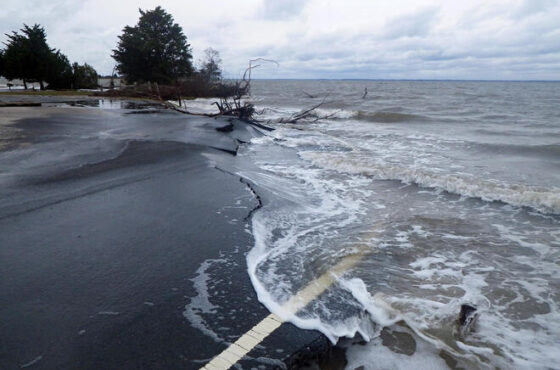Christie’s Last-Minute Nuclear Bailout Plans for New Jersey
Published by the Natural Resources Defense Fund

Bastiaan Slabbers
In the latest move to ram through a multibillion-dollar subsidy package for the state’s (currently thriving) nuclear plants, outgoing Governor Chris Christie is signaling that he won’t consider legislation that includes provisions to protect taxpayers and preserve New Jersey’s ability to continue to grow its clean energy businesses. If the New Jersey Legislature passes a bill to subsidize those plants before Gov.-elect Phil Murphy takes office on January 16, it will not protect consumers, employees, communities or the environment.
That’s not good for New Jersey.
There is broad support for keeping two plants open—Salem and Hope Creek, both in Salem County. The only question is whether we need to do this now—without a deliberate, thoughtful and transparent plan that narrowly tailors any financial support; truly protects workers and communities; and avoids hamstringing Governor-elect Murphy’s ambitious clean energy agenda.
If you’re wondering why we’re even talking about this, see my previous blog Transitioning From Uneconomical Nuclear Power in New Jersey.
Opposition to the process
Citizens across the state are up in arms. The NRDC Action Fund has engaged over 10,000 constituents; Environment New Jersey, Environmental Defense Fund and AARP members are also out in force. People are horrified at the secretive process. It is December 8, and we haven’t seen a bill. Yet Christie—who currently enjoys the lowest approval rating of any sitting U.S. governor—and PSEG seem to be moving forward in full force to secure this bailout in hopes that everyone is distracted with holiday festivities. A frequent snicker at Monday’s hearing, without a bill to even discuss: “We could all go to Washington if we wanted to be treated so shabbily.”
Reported substance is even worse
The substance is even worse than the process. To recap, the proposal—as it is well understood by insiders, since only those writing the legislative language have seen it—is a standalone subsidy for existing nuclear plants. PSEG set out a few particulars at the hearing:
- The subsidy will cost consumers about $400 million per year;
- The state regulator—the Board of Public Utilities—will review the company’s claim that the plants require a subsidy to continue operation;
- The board will adjust the subsidy to reflect increased revenue to the plants should New Jersey join the Regional Greenhouse Gas Initiative, as Governor-elect Murphy has pledged; and
- The subsidy will be reviewed every three years.
What should be included
There was no hint of any provision to minimize costs, or to protect workers, host communities, and the environment when these plants eventually do close because nuclear power is not economical in today’s energy landscape.
Minimizing cost. Any financial support for existing nuclear plants must be narrowly tailored, and it is not possible to narrowly tailor provisions in a bill that you can’t see. There is a huge number of complicated issues involved, including wholesale market rules at the Federal Energy Regulatory Commission (FERC) and PJM (the grid operator for New Jersey, 12 other states and the District of Columbia), market indices, carbon regulation, nuclear plant operations and more. Governor Christie should not ask New Jersey residents to take it on faith that he is on top of all of these issues and will not overpay to keep the plants open at their expense.
Workers, communities and the environment. The reasons to keep these plants open, according to all the testimony on Monday, are
- To avoid laying off the 1,600 people employed at the plants;
- To avoid detrimental impacts to the communities that rely on the plants for a substantial portion of their tax base and for good corporate citizenship;
- To avoid increasing pollution if power from natural gas, oil, and coal plants replaces the electricity that the nuclear plants currently provide; and
- To maintain fuel diversity, which means not replacing the plants with natural gas and putting New Jersey at the mercy of natural gas price fluctuations.
Of course, the answer to these challenges is not to subsidize the plants indefinitely, at any cost. It is to scale up energy efficiency and renewable energy as quickly as possible so they can replace the electricity generation from the plants (addressing the pollution and fuel diversity concerns). And to require PSEG to commit to retain employees for the long process of decommissioning plants, train them for positions elsewhere in the company, or provide severance packages whenever that closing date comes. And similarly, to require PSEG to commit to work with communities to ensure a financial glide path to replace tax revenues and to develop strategies to attract new businesses and investment.
Lessons from others
Other states have grappled with these challenges, providing many lessons for New Jersey, as we detailed in our Issue Brief and numerous blogs (on California’s Diablo Canyon Joint Proposal here and here; on Illinois’ Future Energy Jobs Act here); and on New York’s Clean Energy Standard here).
New Jersey must apply the best practices from these experiences and craft a comprehensive transition plan for its own nuclear power plants that addresses every one of these issues and sets a model for the nation to follow. The state has the time needed to craft such a plan; its plants are not going to close tomorrow. The Murphy administration is about to take office with an ambitious clean energy agenda. If the state legislature decides to take action to avoid an abrupt closure of New Jersey’s nuclear plants, it should do so as part of that agenda.
Read the full article at: https://www.nrdc.org/experts/dale-bryk/christies-last-minute-nuclear-bailout-plans-new-jersey





